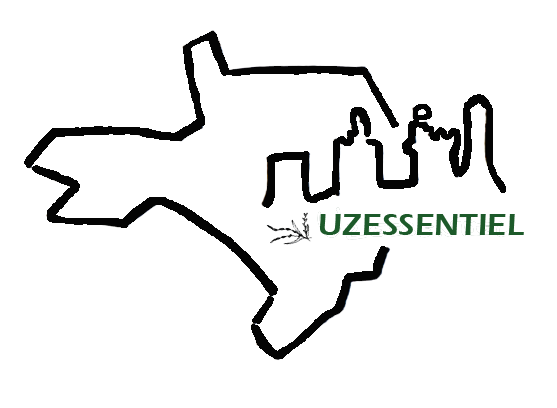Filia, Sarah Lanzi's life in blue
- Par nbesse
- Le 14/08/2025
- Dans Interviews and portraits
FR - Filia, an artistic reinvention and new professional and creative impetus for Sarah Lanzi, founder of the brand in 2021.
Filia, a name that subtly echoes the word filiation... because family heritage is never far from this artistic journey. An unbreakable bond that helped Sarah rethink herself, be reborn, heal her body, and return to simple things after an international career as a performer.
Filia also represents the special care taken in working with fabric, paper and fibre in all their complexity, flexibility and plasticity, an understanding of the materials and techniques of yesteryear, basic, low-tech tools as we like to describe them today, and above all, a return to the essentials: the passing of time, sensations and belonging.
Hello Sarah,
We are delighted to welcome you to the blog's portrait gallery.
You had a fascinating career before turning to an equally exciting artistic pursuit.
What are the main highlights of your life?
My first life was lived at breakneck speed. I worked for 10 years in a much more cerebral environment than today, as a conference interpreter in four languages for governments and international institutions in Paris and Brussels. As a result, I travelled extensively for this job, which I loved, and was closely involved in international politics.
However, my life changed dramatically when my father died. A serious illness paralysed me and confined me to bed for a year. All I could bear was calm and nature... So I reinvented myself by inhabiting my body, creating things with my hands and expressing my feelings on paper. It took years. I didn't choose this turning point; it imposed itself on me.
After two master's degrees, fascinating studies and having worked for so long solely with my mind, I am still surprised to hear my old friends tell me that they always considered me to be a ‘creative’ person. That said, with my mother being an actress, the seed was planted I guess!
What's more, I grew up in a very open environment, surrounded by artists, but I wasn't really aware of it at the time because my parents wanted above all to secure my future through intellectual studies.

Your creations reveal a definite interest in recycling, transmission, and a main motif, plants...
To understand my interest in plants, we must go back to the origins of Filia... While I was bedridden, unable to move or use my head, my only real memory is of the light filtering through the leaves by the window. In Japanese, there is a term specifically for this light: ‘komorebi’.
|
KOMOREBI (木漏れ日) is the Japanese word that refers to the poetic image of sunlight filtering through leaves and branches. It echoes our mission to take the time to appreciate the extraordinary in the ordinary (Editions Komorebi).
|
My father had lived in Japan, and without really noticing it, I was immersed in an aesthetic that was both very refined and figurative. These inspirations can be found in the motifs of the artisanal aspect of my work and in the calligraphic movement of my paintings.
The deep, powerful blue of your creations, typical of cyanotype, is also very Japanese, isn't it?
Indeed, Prussian blue – created in the 18th century by a reaction similar to cyanotype – plays a strong role in Japanese art: Hokusai imported it from Europe and sublimated it with his Thirty-six Views of Mount Fuji, the best known of his aizuri-e (blue prints).
|
Cyanotype is one of the earliest photographic techniques, discovered in 1842 by British mathematician, astronomer and chemist John Herschel, at the same time as silver photography. "I love the simplicity of the process, which requires little technology and allows countless creative variations. I use it on many different media because what fascinates me is the way it captures the light of the moment. It is rooted in the here and now and goes far beyond photo development." Sarah Lanzi
|
The blue colour is the result of the chemical reactions of the cyanotype (blue print, from the Greek ‘kyanos’ and ‘typos’), but it is extremely rich and full of nuances. The shades vary according to a thousand parameters: the dosage of iron oxides in the mixture, the medium, the humidity, the season, the length of exposure to the sun, passing clouds...
I don't play with the shades; they dance with my work. The beauty of this process is also its unpredictability, with its share of unexpected events, sometimes failures... It is always both instructive or useful!
My exhibition entitled ‘Yutori, l'espace suspendu’ (Yutori, suspended space) refers to a term that conveys many things: being at ease, having room to breathe, space for oneself physically and, above all, intellectually... The moment between two things, that moment of grace that we notice without naming it, and that we keep within ourselves. It is a whole philosophy of observation, letting go, sobriety and admiration for the world.
 About the design you choose...
About the design you choose...
I love creating with what nature has to offer. From fern shoots to pennycress, everything inspires me to embark on new artistic adventures, using a variety of media. Every day, a new chapter is added to Filia's story, allowing me to...
Frames, cards, notebooks, but not only...
Oh, well... this is just a small glimpse into my world! Added to this are many products based on old linen and canvas, which allow me to play with the material.
Most of my fabrics are sheets like those used by our grandmothers, which I find at flea markets. These antique fabrics are made of incomparable cotton, and with each new piece, I am amazed not only by the materials but also by the way they have been worked.
Each of these embroideries and openwork patterns reflects long winter evenings spent embroidering by the fire, generations of expertise. These fabrics struggle to find a place in our daily lives: rust-stained, damaged by years of being folded away in damp cupboards, stained by use, worn down by modern detergents and washing machines...
Using them, reusing them, transforming them is a way of bringing them to life and maintaining the link between where we come from and who we are.
|
'Of all the different types of openwork, ladder lace is the simplest and is best made on a fabric with a clearly visible weave that is not too tight: sheet fabric, batiste, etc'. (coupecouture.fr)
|
But I do allow myself to venture into areas that are less familiar to me, such as jewellery and even bottle labels, particularly when collaborating with other artisans and artists. Working with others is so enriching!
Instructions for creating: Between designing, choosing the right medium, finally completing the work, how long does a new project take you?
I distinguish experimentation (which doesn't lead to anything specific but feeds into what I do in the background) from production (i.e. the moments when I seek to create something that I feel and imagine, or that I am asked to create): a theme for an exhibition, a collaboration with another artist or artisan, or a commission for a private individual.
The two feed into each other and research is an integral part of the creative process, but it is almost impossible to quantify because it takes days, weeks...
Sometimes I think that certain works will lead nowhere, or are even a waste of time, until the day I think about them again, use them, push them in another direction, combine them with other materials or techniques that I hadn't explored before... and they become something else.
You participate to many exhibitions. Do you offer training courses, workshops, or presentations?
I love sharing my knowledge! In my previous career, I taught at university level for many years.
My workshop-showroom in Aigues-Mortes is therefore above all a place for sharing, where I welcome anyone who wants to discover cyanotype, whether with family or friends... And starting in September, I will also be offering a bookbinding workshop!
In addition to this, I welcome photographers who want to develop their negatives, and I give talks at cultural venues and schools from nursery to university level, as cyanotype is an incredible educational tool for teaching chemistry, physics, art history and more.
Good to know: Filia offers a ‘creative kit for a fun and original activity. Everything you need to print with the sun using cyanotype. On the programme: a little chemistry, physics, botany and magic, for curious minds and little crafters aged 6 and up. The cyanokit allows you to make intense blue images all year round’.
![]() Many thanks to Sarah Lanzi for her collaboration on this article.
Many thanks to Sarah Lanzi for her collaboration on this article.
The right address: Filia. Find Filia at the workshop in Aigues-Mortes (19 rue d'Esparon, by appointment only), at the Pavane designer boutique in Montpellier (7 rue en Gondeau), at the Le Perroquet Zébré designer boutique in Sommières (8 rue Général Bruyère), at the Zone Onze gallery in Montpellier (11 rue de la Fontaine), at the Fizz Feathers designer boutique in Aigueze (30) (4 place du jeu de paume), and also on Instagram @sarah-reenchante_le_quotidien and Facebook. Contact: filia.original@gmail.com.










